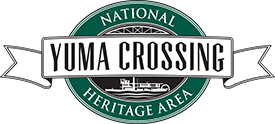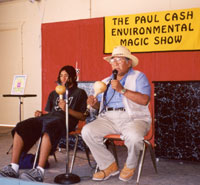According to U. S. Department of Interior – Indian Affairs, “National Native American Heritage Month is celebrated each year in November. It is a time to celebrate the traditions, languages and stories of Native American, Alaska Native, Native Hawaiian, and affiliated Island communities and ensure their rich histories and contributions continue to thrive with each passing generation. This November and every month, we celebrate the culture and heritage of these remarkable Americans who deeply enrich the quality and character of our Nation. We celebrate Indian Country with its remarkable diversity of American Indian and Alaska Native cultures and peoples while remembering and honoring our veterans who have sacrificed so much to defend our Nation.
This year’s theme at Interior is Celebrating Tribal Sovereignty and Identity. Tribal sovereignty ensures that any decisions about Tribes with regard to their property and citizens are made with their participation and consent. The federal trust responsibility is a legal obligation under which the United States “has charged itself with moral obligations of the highest responsibility and trust” toward Indian tribes.
The Department of the Interior plays a key role in strengthening Tribal sovereignty, living up to trust and treaty responsibilities, and conducting robust Tribal consultation. Much of the Department’s work under Secretary Haaland’s leadership also centers on acknowledging the impact that relocation, forced assimilation, and lack of critical funding has on Indigenous communities across the country. We are committed to elevating those issues while empowering Tribal governments and Indigenous peoples.”

Prior to my return to Cleveland, I was the Executive Director of the Yuma Crossing National Heritage Area (YCNHA). One of the favorite parts of my job back then was learning the history of a key strategic partner, the Quechan (Kwatsáan) Tribe. It was a distinct honor to be able to lead the introduction of the first ever exhibit at the Colorado River State Historic Park dedicated to the story of the Indian Wars told through the eyes of the Kwatsáan themselves, rather than through those of their colonizers. My first board chair, Brian Golding Sr. is a member of the Tribe who helped me foster a strong relationship with members of the Tribal Council and Cultural Committee, whose input was invaluable in the development of the historically accurate and compelling exhibit.

Through Brian, I was introduced to a colorful character and member of the Kwatsáan by the name of Preston Arrow-Weed, a playwright, and actor. One very intriguing play of his chronicles the story of how the Kwatsáan Chief helped the town rid themselves of the infamous Glanton gang. Other well-known Native American actors include Julia Jones who is part Choctaw, Chickasaw, and African American and is known for her roles in The Twilight Saga film series, Dexter, and Wind River. Jason Momoa is Native Hawaiian and Pawnee with starring roles in Aquaman, Fast X, and Game of Thrones. Academy Award Nominee Graham Greene of the Oneida First Nation impressed in Dances with Wolves, Wind River, and The Last of Us. While Academy Award Nominee, and Screen Actors Award Winner, Lily Gladstone, star of Killers of the Flower Moon is of Blackfeet and Nez Perce heritage.
Perhaps one of the more recognizable indigenous names in the world of film is Wes Studi. He belongs to the Cherokee Nation and is an actor and film producer. He has appeared in Academy-nominated films Geronimo: An American Legend and The New World. He is also known for portraying Sagat in Street Fighter. In 2019, Studi received an Academy Honorary Award, becoming the first Native American filmmaker and the second Indigenous person from North America to be honored by the Academy (the first was Buffy Sainte-Marie). In December 2020, The New York Times ranked him #19 in its list of the “25 Greatest Actors of the 21st Century.”
Another person of Native heritage who immediately came to mind when writing this piece is my friend Margo Gray who I have known since my days with Big Brothers Big Sisters when she was part of the national board of directors. In a recent Zoom call, which included a local Cleveland filmmaker from the Ojibwe tribe, John Washco, I found out that Margo’s Osage family is highlighted in the above-mentioned film Killers of the Flower Moon, which was nominated for 10 Academy Awards. Her great-grandfather was Henry Roan, a 40-year-old Osage man, whose murder was depicted in the film. His body was found just outside of Fairfax, Oklahoma behind the steering wheel of a Buick. Roan had been shot in the back of the head. Margo was an advisor on the set of the film. You owe it to yourself to read her letter to her great-grandfather who had a profound impact on her life.
I trust your thirst for learning more about the history of this country, especially that part before the arrival early explorers and colonizers will grow after reading this piece. To know where we are going, we must know where we have been. History is incomplete without first talking about the original inhabitants of this land; do not ignore that fact, or worse, attempt to whitewash it, as some have been trying to do, and is an absolute travesty.
Cheers,
LP
Chief Diversity Officer, VP Corporate & Community Engagement

